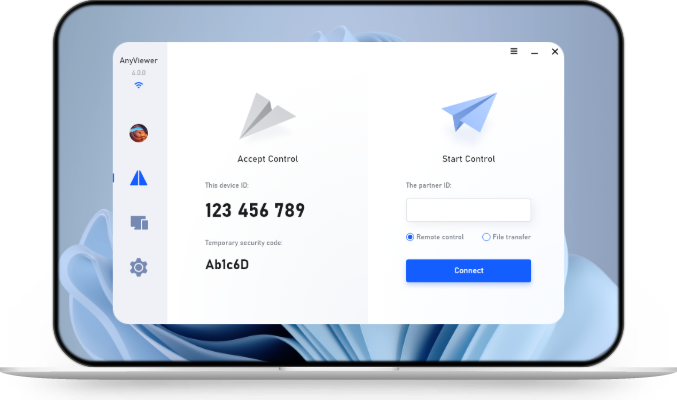Unveiling the Universal Remote for Android: A Comprehensive Guide
Explore Android control in our guide, "Mastering Control: Universal Remote for Android." Learn about remote evolution, differentiate infrared vs. smart remotes, and delve into advanced features. Master syncing, programming, and troubleshoot effortlessly with AnyViewer. Elevate your Android control experience with this concise guide.
Introduction
In a world dominated by smart devices, having a universal remote for your Android gadgets can be a game-changer. This guide aims to demystify the concept and functionality of the universal remote control for Android, from understanding its features to exploring the unique capabilities offered by tools like AnyViewer.
What Is the Universal Remote Control for Android?
The landscape of remote control technologies has evolved significantly, offering users more choices and capabilities than ever before. Infrared remotes, relying on traditional signals, cater to devices equipped with infrared receivers. On the flip side, Smart remotes leverage Bluetooth or Wi-Fi connectivity, providing broader compatibility and advanced features.
Understanding Infrared Remotes
Infrared remotes function by emitting infrared light signals, which are received by sensors on compatible devices. While limited to line-of-sight communication, they remain a reliable option for controlling various home entertainment devices.
Unveiling the Capabilities of Smart Remotes
Smart remotes, armed with Bluetooth or Wi-Fi connectivity, transcend the limitations of infrared remotes. They offer extended control ranges, enabling users to interact with devices even without direct line of sight. Additionally, smart remotes often come equipped with touchscreens, voice command functionalities, and customizable buttons, providing a more sophisticated and tailored control experience.
Compatibility and Features
Universal remotes are designed to consolidate control over various devices, such as TVs, sound systems, and streaming devices. Beyond basic controls like volume adjustment and power management, modern universal remotes offer advanced features. Voice commands, touchscreen interfaces, and the ability to customize button functions contribute to a versatile and user-friendly remote control experience.
Navigating Android Devices with Universal Remotes
Once you've selected a universal remote, the next step is to sync it with your Android devices. The process varies between remotes, but typically involves programming the remote to recognize and control specific devices. This can include TVs, sound systems, streaming devices, and more. The goal is to consolidate control into one remote, reducing clutter and enhancing convenience.
AnyViewer: Beyond Traditional Remote Control
While universal remotes excel in managing hardware devices, software-based solutions like AnyViewer offer a different dimension to remote control. AnyViewergoes beyond traditional remote control by allowing users to access and control their Android devices from a distance. Whether troubleshooting technical issues or managing files, AnyViewer provides a versatile solution for Android remote management.
The Role of Software-Based Solutions
Traditional universal remotes rely on hardware to transmit signals, while software-based solutions like AnyViewer leverage the internet to establish connections between devices. This provides users with a broader scope of control, enabling remote access and troubleshooting with just an internet connection.
AnyViewerFeatures and Benefits
AnyViewer offers a plethora of features, making it a valuable asset for those seeking more than conventional remote control. With AnyViewer, users can access their Android devices remotely, share screens, transfer files, and troubleshoot issues. This extends the capabilities of remote control beyond basic commands, providing a comprehensive tool for managing Android devices.
Troubleshooting Tips for Universal Remotes
Tackling Connectivity Issues
Despite their convenience, universal remotes may encounter connectivity issues. Ensuring proper pairing and checking for interference can resolve these problems. Smart remotes may require software updates for optimal performance.
Overcoming Programming Challenges
Programming a universal remote can be daunting, especially for those new to the process. Referencing device manuals, utilizing online resources, and seeking customer support are effective ways to overcome programming challenges. Patience is key, as mastering the programming process ensures a seamless remote control experience.
Conclusion
In the realm of Android devices, a universal remote can be your ticket to streamlined control. Whether you opt for an infrared or smart remote, understanding their features and compatibility is essential. Pairing it with tools like AnyViewerelevates the remote control experience by offering comprehensive management beyond hardware devices. Troubleshooting tips ensure that any challenges are easily overcome, allowing you to master control effortlessly.
FAQs:
Can I use a universal remote for both my Android TV and sound system?
- Yes, many universal remotes support the control of multiple devices, including TVs and sound systems, providing a consolidated solution.
What advantages does AnyViewer offer in managing Android devices remotely?
- AnyViewer allows users to access and control their Android devices from a distance, facilitating troubleshooting, file management, and overall device control.
How can I troubleshoot connectivity issues with my universal remote?
- Ensure proper pairing, check for interference, and consider software updates for smart remotes. These steps can resolve common connectivity challenges.

